During the summer gardening months, you may have noticed a few spots or bugs on your vegetable leaves or grapevine leaves. There’s a chance that you may have Japanese Beetles in your garden. If you don’t know how to get rid of Japanese beetles, you might lose most of your garden.
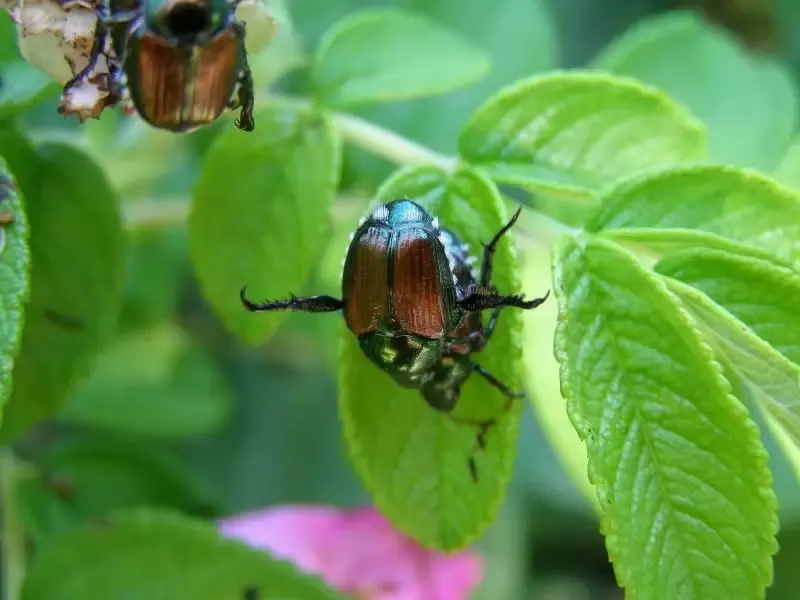
What are Japanese Beetles?
Japanese beetles are a common form of beetles that are often found on the leaves of vegetables, fruits, and flowers. They have a shiny body with brown wings and can be found in groups or on their own.
Known for laying eggs their entire adult life, they can lay eggs quickly and can produce anywhere from 40 plus eggs that will start out as grubs and feed off the base of your plants before growing and starting to eat at the tops. Rain doesn’t deter them and moist areas actually help in keeping their eggs and grubs from drying out.
What damage can Japanese Beetles do?
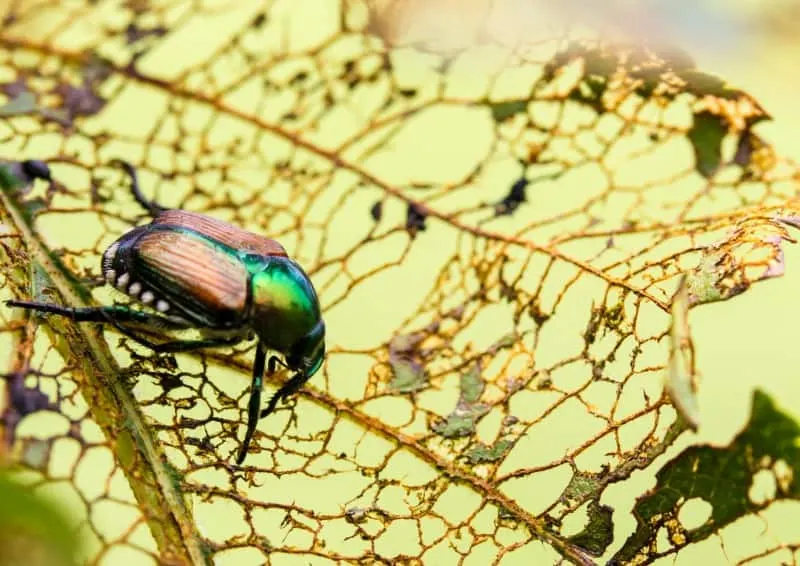
The short answer: A LOT! Throughout their life cycle, they focus on various areas of the plants. At a young age, they are in the soil and near the roots and base of the plants. As they grow, they will start to focus more on the leaves and the veins of the flowers and vegetables.
Not only can they kill off sections of your garden (and even your entire planted crops!), but they can also attack your grass, your flowers, and many other outdoor plants as well. If not detected and caught early, they have the capability to put a huge damper on the growth and survival of your outdoor plants.
What plants will Japanese Beetles eat?
It depends on the life stage of the beetles. In the grub stage, they eat grass and the roots of your vegetables. As adults, they love the fresh leaves of many plants, shrubs, and trees. Here are just a few:
- grape leaves
- roses
- basil
- fruit trees (cherry and peach trees are among their favorites)
- ripe fruit also attracts them
- Japanese maples
- and many, many more
Learn more about what Japanese beetles eat.
How to Get Rid of Japanese Beetles
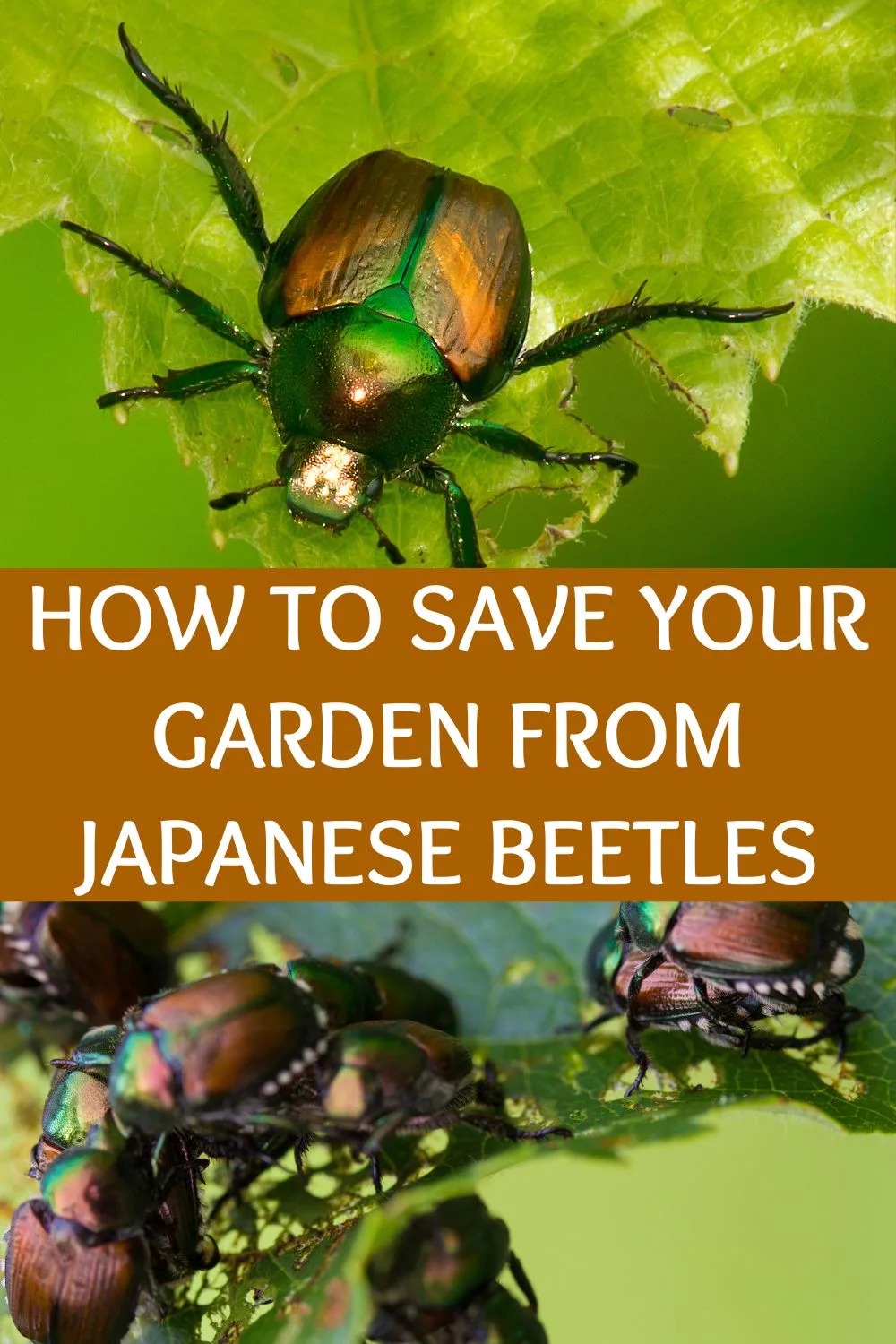
There are many methods through which you can try to rid of the Japanese Beetles. While you can use pesticides that kill them instantly, I prefer natural and organic options.
1. Remove beetles by hand
If you notice them early enough, you may be able to pick them off your leaves and out of the soil before they really start to spread.
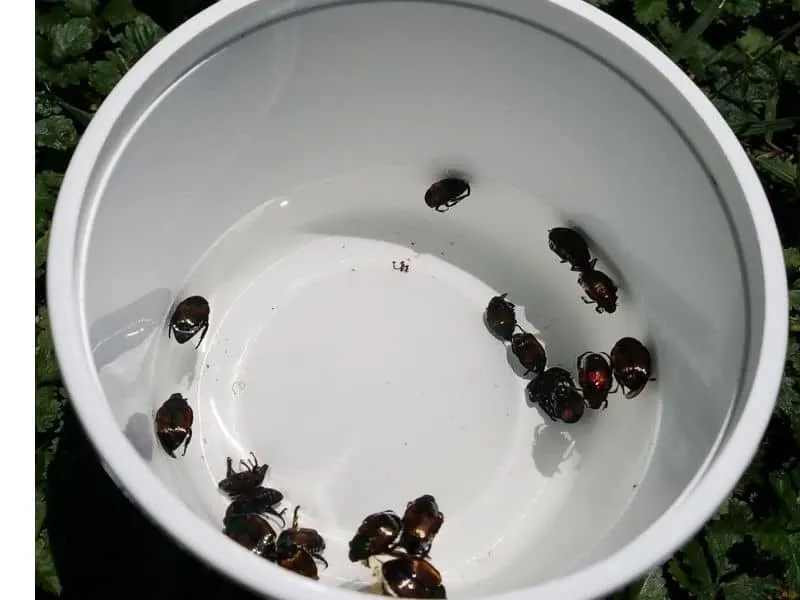
Better yet, get a plastic container with some water and a squirt of soap and go get them! Place the cup under the leaves when you see the bugs and tap the leave gently: they’ll fall right into your soapy water.
Good to know: Japanese beetles like to play dead when they perceive danger, so they’ll “drop dead” if you move their leaf or get too close. If you position your cup of soapy water right, they’ll fall right into it, and they die almost instantly.
2. Plant 4 o’clock flowers
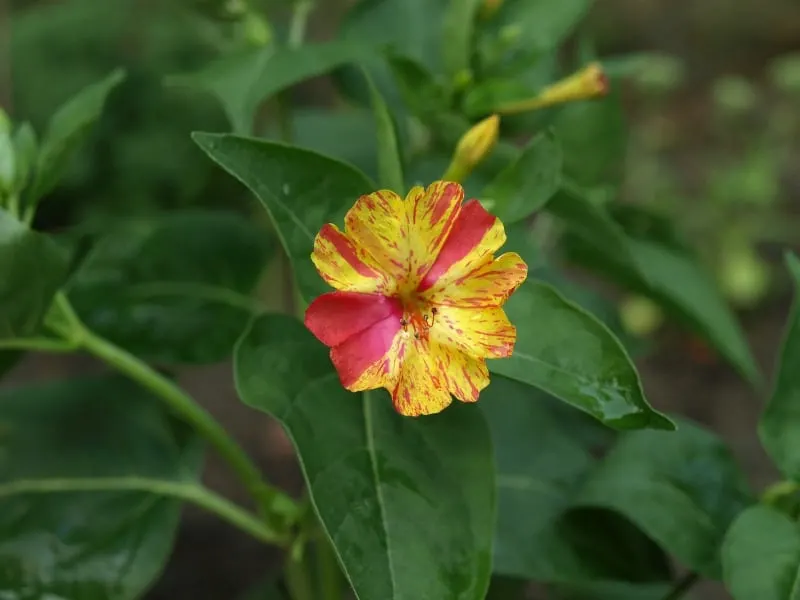
The beetles can’t resist their leaves and it kills them. The flowers open up around 4 PM – 5 PM and they smell wonderful.
They close back up in the early morning.
The first year just a couple of Four O’Clocks killed about 90% by the end of summer. The rest died the next year and we didn’t see any more until we moved to a new place.
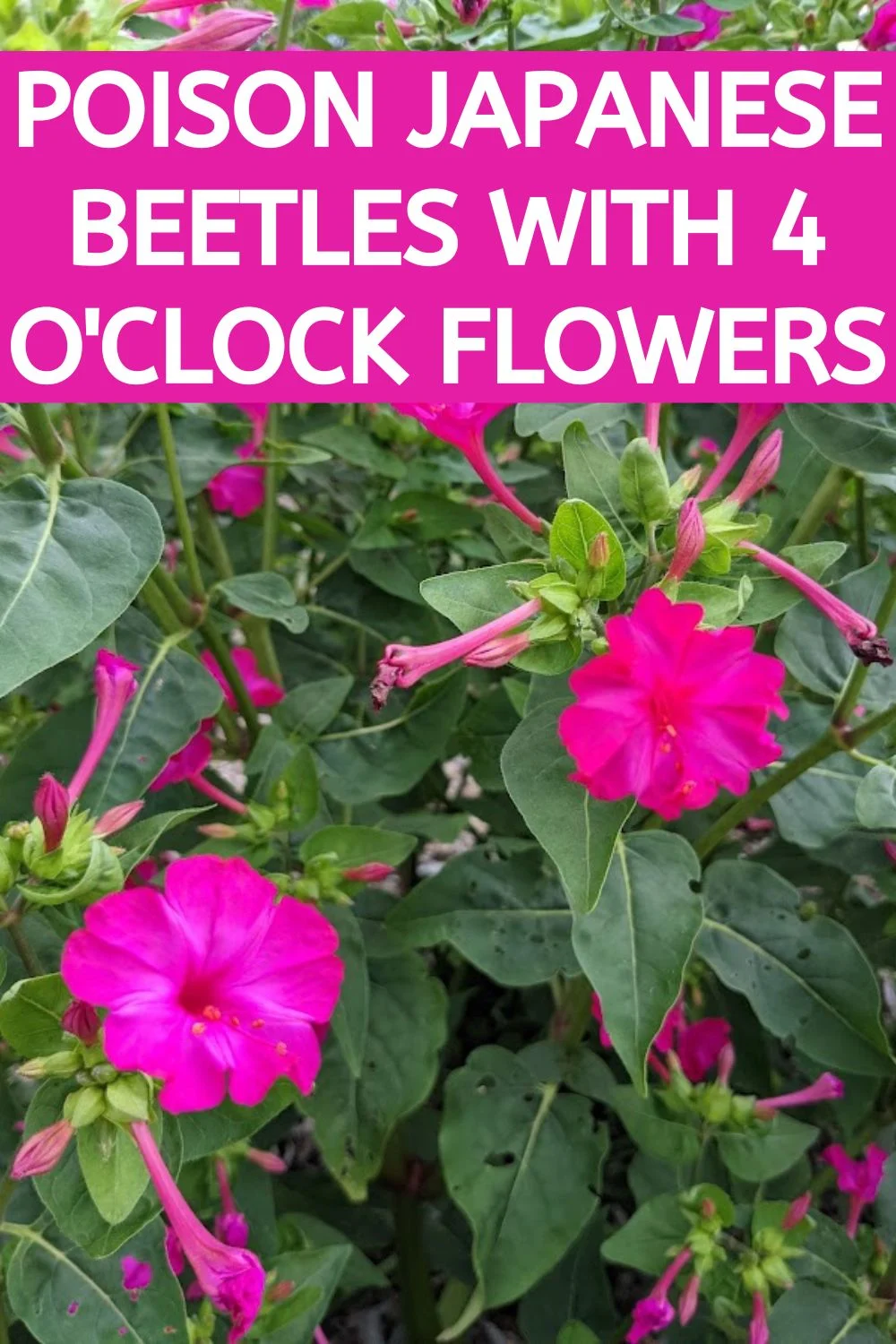
3. Create a natural homemade trap
Another homemade method for getting rid of Japanese beetles is to mix 1/3 gallons of warm water with a packet of yeast, 1/4 cup of sugar, a small piece of ripe banana, and a tablespoon of dish-washing liquid. Mix all of it in an empty milk jug you cleaned out, and hang it close to where Japanese beetles are attacking your garden.
If you want to see how this is made, take a look at the video below:
4. Try this natural homemade insecticide
Don’t use harmful chemicals when you can just make your own! Combine a teaspoon of dish-washing detergent and a cup of vegetable oil and mix together.
Once combined, add to a quart of water and spray on the beetles at varying intervals. Some say to use it over a 10-day period for best results.
Always spray early in the day if possible as that is also when they will be a lot more active!
More natural methods from our Facebook followers
- I mixed water with peppermint oil and sprayed it on the leaves they were eating. So far I don’t see any more beetles
- I treat my yard with milky spore and also ask to treat my neighbor’s yard and no cost to them. It won’t help with the adults this season. It will help next season.
- Kaolin clay works great, it irritates the beetle and they go away – but it doesn’t hurt your pollinators – sold under the name surround – I have used it for 2 years now
- Per quart, I use 2 tablespoons of pure vanilla extract and 1 teaspoon of cayenne. I add about 1/2 teaspoon of Dawn dish soap to make the mixture stick
- Beneficial nematodes…just spray the yard and they kill the grubs…no more moles or fleas either
- They are fantastic bait for fishing. You’ll catch stuff all day with them
- big birds, turkeys, and chickens just to name the common ones, love them
5. Plant plants that do not attract Japanese beetles
While Japanese Beetles aren’t finicky, there are certain plants that they do not seem to like as well. In your garden, they will stay away from cabbage and kale and if you are looking for a fruit tree that seems to be immune from them, plan ahead and plant a pear tree. You’ll save yourself a headache if you can just avoid certain plants altogether!
6. Use a store-bought beetle trap
If all else fails, you might want to try a beetle trap. Many argue that you’ll attract more beetles to your garden if you do this, and it may be true. But, you’ll help thin out the Japanese beetle population, and if you place it in a spot away from your garden, it WILL help keep your plants safer.
The moment that you notice Japanese Beetles in your garden or on your plants, it’s time to take action. Use the methods above to try a natural approach to see if you can rid of them on your own! The sooner that you can remove them, the better the chance that your garden and your plants will survive!
Have you ever had to deal with Japanese Beetles? What have you done to get rid of them?
Japanese Beetles FAQ
Can Japanese beetles kill a large tree?
If you catch them on the tree and remove them you’ll save the tree. But if enough beetles attack it, in just a few days they’ll eat all the leaves, making it almost impossible for the tree to survive.
Last year we had the biggest Japanese beetles invasion I’ve ever seen and it took down several trees at our local park: so sad!
When do Japanese beetles come out?
Depending on your area, they could arrive as soon as late May. In our area (zone 6b) they arrive in mid-June and stay for about a month.
When are Japanese beetles active?
They are most active in the morning and early afternoon, especially on warm, clear days.
Who eats Japanese beetles?
Many birds will eat Japanese beetles: blue jays, robins, starlings, sparrows, and woodpeckers among many others.
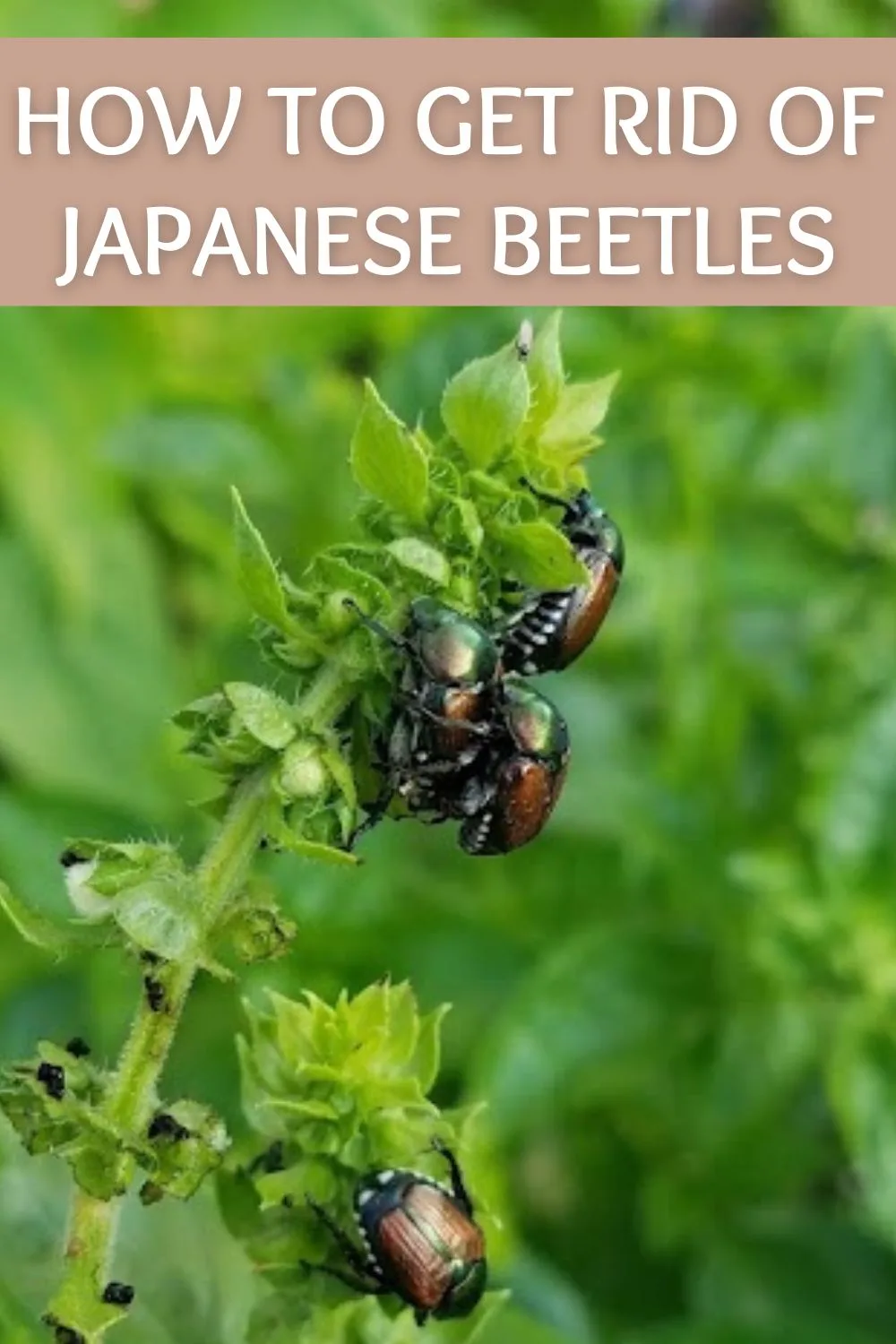
Adriana Copaceanu is a passionate nature lover living in the country on her dream property where she grows vegetables, lavender, and wildflowers that she shares with the wildlife they attract. When she's not in the garden, she loves spending time with her chickens and planning her next nature project. Check out her books below:
How to Grow Lavender for Fun and Profit: Lessons Learned from Planting Three Hundred Lavender Plants





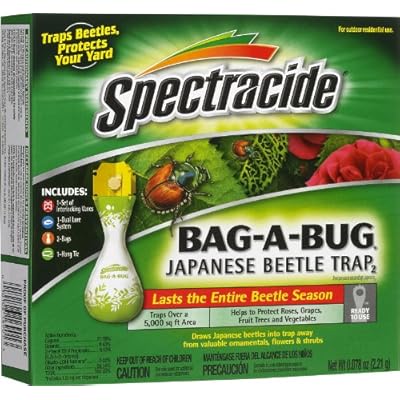
13 Best Companion Plants For Carrots (And 4 To Avoid)
Saturday 15th of July 2023
[…] Chives have been known to encourage healthy growth in carrots and even make them sweeter. Plus, chives repel nasty pests like aphids and Japanese beetles. […]
11 Best Companion Plants For Roses
Tuesday 23rd of May 2023
[…] of the same diseases as roses in rainy, humid weather, including mildew, aphids, mealybugs, and Japanese beetles. This makes them a suitable companion plant for roses only in dry-summer climates, since all of […]
6 Great Companion Plants For Dahlias
Friday 5th of May 2023
[…] Japanese beetles prefer geraniums to dahlias, so when you plant the geraniums, they will leave the dahlias alone. This is great because you will not have to spray toxic chemicals on your plants to keep the beetles from decimating your dahlias. […]
21 Gorgeous Companion Plants For Geraniums
Sunday 19th of February 2023
[…] The smell of this plant repels pests that might bother your geraniums. Aphids, potato beetles, and Japanese beetles are just a few of the pests that find the fragrance of catnip […]
15 Stunning Yellow Flowering Trees For Your Yard
Wednesday 8th of February 2023
[…] It prefers full sun but can grow in partial shade. It has few disease or pest problems, although Japanese beetles can cause cosmetic problems when they chew its […]